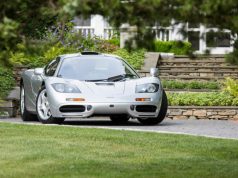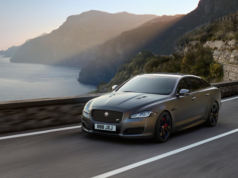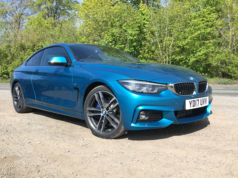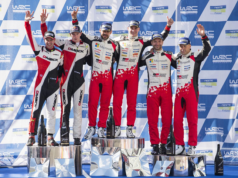Many badges are synonymous with motoring excellence. Instantly recognisable brands, such as Porsche, Mercedes-Benz and Ferrari have over the years quite rightly become regarded as the benchmarks in their field. However, there is one car which transcends all marques and manufactures, a car whose very own mythical aura and legacy surpasses even the most distinguished and renowned global motoring powerhouses.
In fact, the tale of one of the greatest enduring success stories in motoring history begins some 55 years ago. It is a saga which takes us from the drawing board of a Greek designer in a Birmingham factory, via the frozen mountain tracks of Monte Carlo and the sewers below Turin, all the way to millions of bedroom walls worldwide. Some cars are technical innovations, some are racing legends. Some sell in their millions, whilst others have become pop culture icons. Very few, however, can boast all of the above and still be picked up at auction for half the price of a Dacia Sandero. Except one.
The Mini is quite simply legendary. Arguably no other car is so universally recognised and loved across the world. But, if it weren’t for events in Egypt in the 1950’s, it may never have even existed. Britain in 1956 was not a happy place to be a motorist. The Suez Crisis had led to crippling fuel shortages across the realm, leaving drivers with empty tanks and manufacturers with empty coffers. Against this grim backdrop, the bigwigs at BMC decided to take matters in to their own hands, tasking a little known Greek-British designer by the name of Alec Issigonis to come up with a small and affordable family car that would appeal to the masses. In August 1959, after three years of design and testing, the finished article finally rolled off the production line. Named the Austin Seven or Morris Mini-Minor, this was the first time the world caught a glimpse of Issigonis’ brainchild. Sales quickly took off and by the 1960’s the Mini was well on the way to establishing itself as a modern great.
But what was it about this humble little city run-around that really caught the public imagination? How did it enjoy four decades of unrivalled success in Britain and across the world? What exactly was the genius in Issigonis’ design that elevated the Mini to the status of national icon, alongside the likes of Churchill and the Beatles?
Firstly, from a purely technical point of view, the Mini was undoubtedly revolutionary. Its perceived simplicity in fact masked the real ingenuity behind Issigonis’ many innovations, brainwaves still lauded and admired by the techno-wizard digital designers of today. The whole philosophy behind the Mini project was essentially focused on saving space and weight at every possible opportunity. Most significantly, the car featured a ground-breaking front wheel drive transverse engine design, with the crankshaft positioned perpendicular to the length of the car, a layout mirrored by almost all small front wheel drive cars to this day. Replacing the traditional springs, Issigonis elected to use a novel rubber cone-style suspension, again devised to maximise cabin room, but it was this masterstroke that provided the Mini with one of its most famed facets; the razor sharp, ridiculously fun go-cart-like handling. Petrol-heads around the world would agree that there are few greater pleasures to be had on four wheels than slinging a Mini around a track to your heart’s content.
It was precisely this that attracted motor racing mogul John Cooper to come on board with the Mini team in 1961. Seeing the potential to develop the car in to a slick and sharp racer, he immediately set about squeezing maximum performance out of the pint-sized package. The most potent of his creations, the Mini Cooper S, featured a tuned 1.3 litre petrol engine, and this perfect storm of power and dexterity paved the way for Mini’s finest hour in motor racing.
The infamous Monte Carlo Rally has a reputation for being one of the toughest and most unforgiving racing events around. At the start of the 1960’s, this was very much the domain of the big powerful playground bullies, cars such as the Saab 96 and the Mercedes-Benz 220SE which ploughed their way to victory though the snow drifts. Then along came the Mini Cooper S, and in the space of four years between 1964 and 1967, the rallying rulebook had been well and truly torn asunder. With its featherweight body and unrivalled agility, the Mini proved perfectly suited to the demands of rallying. In the hands of maverick drivers Paddy Hopkirk, Timo Mäkinen and Rauno Aaltonen, the plucky Brits swept their way to four back-to-back victories, making the established elite look like wallowing, ungainly rhinoceroses floundering on the ice. These were the golden years of Mini in motorsport and went a long way to generating the famous underdog spirit which has defined the Mini story for decades.
However, the true influence of a car like the Mini can’t be judged simply on horsepower, pistons and trophies alone. The true greats have become embedded in national culture, symbols of their country’s very identity; take the Ford Mustang or the Citroën 2CV for example. Perhaps more so than any other car in existence, the Mini has scaled these heights. It is 1960’s Britain. In the decade of rebellion, free-love and liberation, the Mini was the ultimate status symbol. From Steve McQueen to Paul McCartney, George Best to Britt Ekland and even Enzo Ferrari himself, the car became as iconic as its superstar owners. Or should that be the other way round? Of course, cinema played its part too. For many, the Mini will always be immortalised by the 1969 film the Italian job. The image of three cars, each adorned in the red white and blue of the Union Flag, hurtling through the streets, arcades and sewers of Turin after pulling off the heist to end all heists, has to be one of the all-time most evocative symbols of British pop culture. It is perhaps one of the greatest ironies in motoring history that by the end of the decade, a car that started out as no more than a cut-price family run-around, had ascended to a status that would rival even the most legendary Ferrari or Aston Martin in existence.
On 4 October 2000, the final original Mini rolled off the production line at the Longbridge plant in Birmingham, the very same place where the journey had begun 41 years earlier. By that time, with the last remnants of the British car-manufacturing empire crumbling around it, the Mini marque had already fallen into German hands. However, what really mattered, the legacy, had long since been established. It is a legacy that is to some extent upheld today with the continued popularity of its successor, the new MINI, proving that the badge is as desirable in 2013 as it was five decades ago. In all, over 5.3 million examples of the classic Mini were sold across the globe, making it officially the bestselling British car of all time. In fact in 1999, it was voted the second most influential car of the 20th century behind the Ford Model T.
Here at Inside Lane, we concur. The sheer number and variety of accolades that the Mini has gained throughout its long and distinguished life is truly astonishing. It is something very special indeed, the likes of which may never be seen again. Issigonis set out to make a car; he created a legend. Indisputably, it is one of the greatest of all time.










